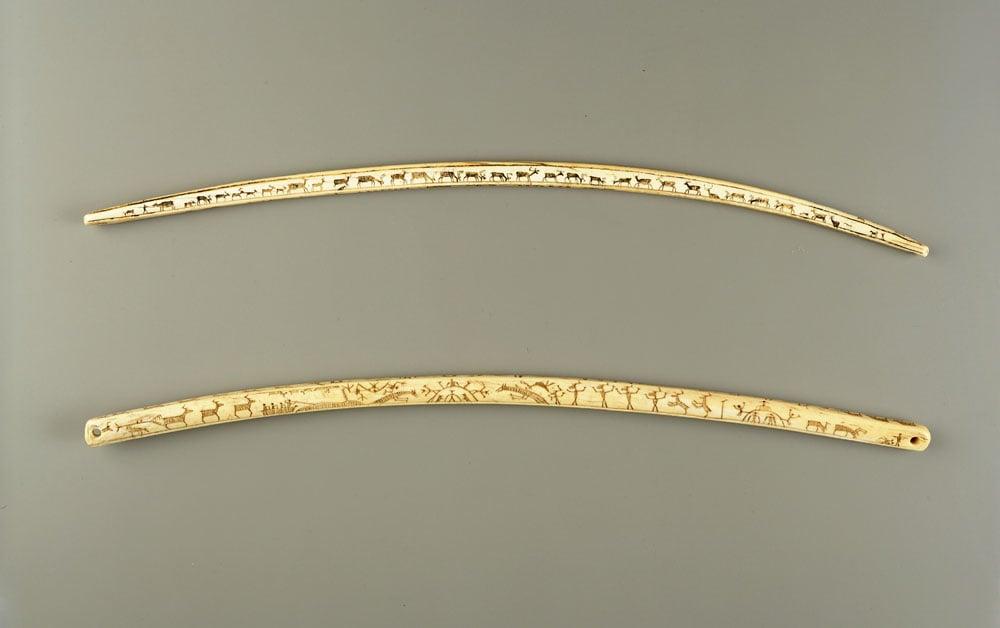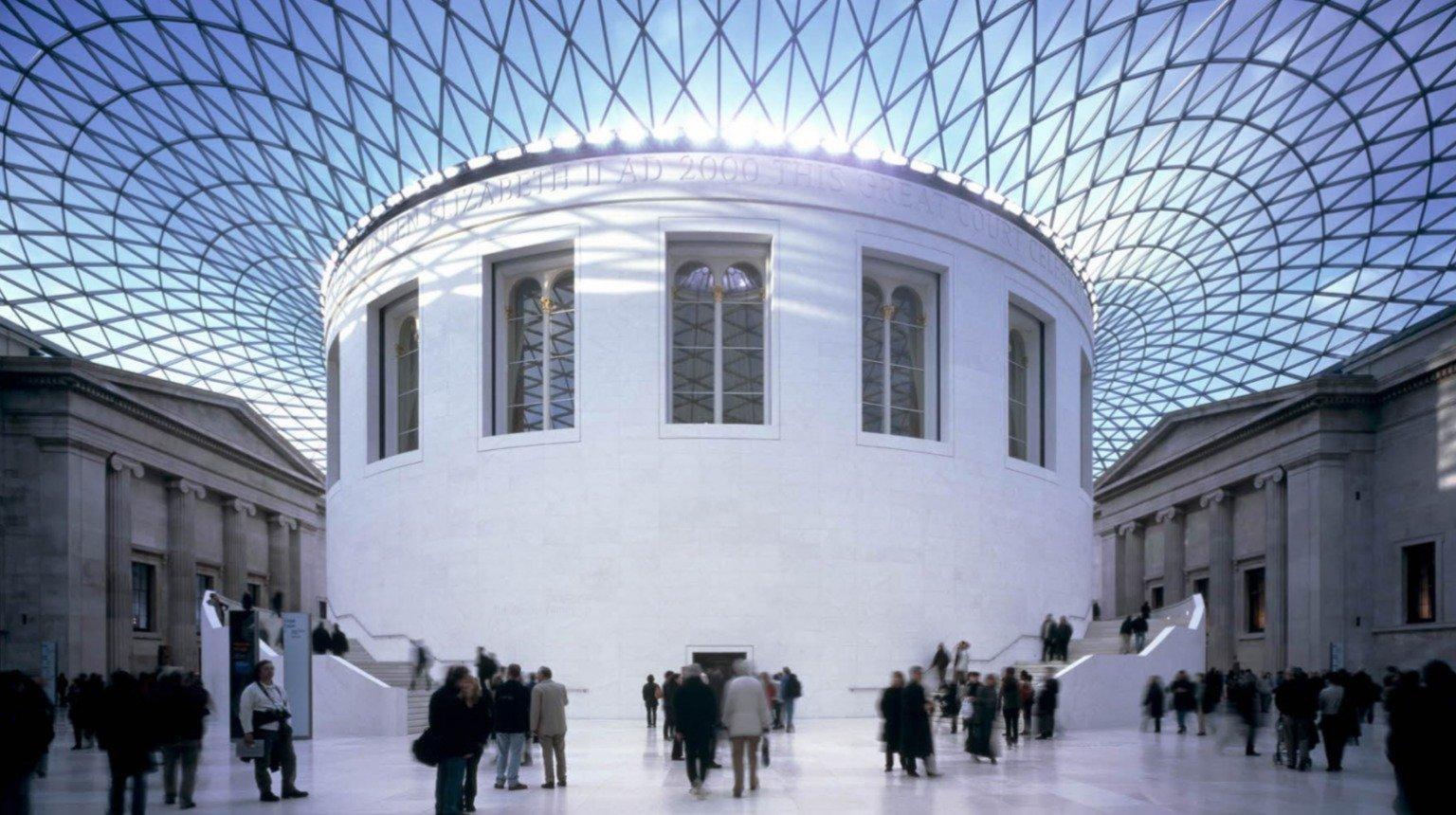
These drill bows, made by the Inupiak people of northern Alaska, are decorated with scenes representing the hunting of land and sea creatures, a theme cherished by the Eskimos. One depicts geese flying and being netted and the other fantastic scenes of dancing caribou and monstrous beings performing around people's houses. They were primarily used to drill holes by a technique that is still in use today. A wooden shaft would be attached to a bit-like mouthpiece held between the user's teeth, freeing both hands. Attached horizontally to the top of the shaft would be the drill bow, a thong extending from the bow to the shaft. As the drill bow is moved from side to side, the thong tightens around the shaft, which rotates, driving it into the surface to be drilled. They were part of a large and varied collection of 30 works of ethnographic art, formed by W. O. Oldman, which the Art Fund presented to the nation on account of its 'exceptional merit'.
More information
Title of artwork, date
Two drill bows, 19th century
Date supported
1949
Medium and material
Argillite & wood
Dimensions
Length: 42 cm

Get a National Art Pass and explore British Museum
You'll see more art and your membership will help museums across the UK
National Art Pass offers available at British Museum
Art Funded by you FAQs
Contact us
If you have a question about a work of art in our archive, please contact the Programmes team. We’ll be happy to answer your enquiry.